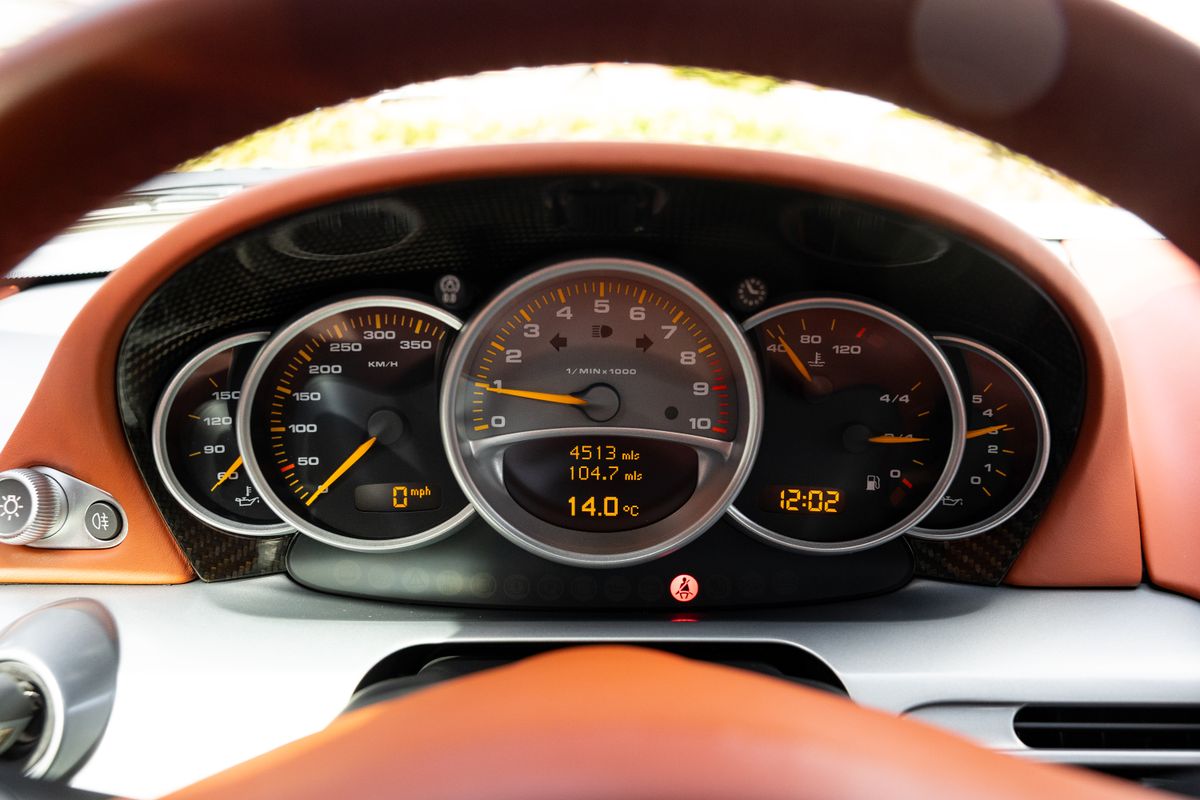2004 Porsche Carrera GT
Key Points: 2 Owners from New, Full Inspection with Porsche Reading Just Completed, Topaz Paint Protective Film (PPF) Applied to Whole Car, Bucket Seats, Car Cover, Beech Wood Gear Shift Knob
The roots of the Porsche Carrera GT can be traced back to the 911 GT1 and LMP1-98 race cars, which were retired partly due to the FIA and ACO rule changes in 1998, prompting Porsche to develop a new Le Mans prototype for the 1999 season.
The car was initially intended to use a turbocharged flat-six engine, but was later redesigned with a 5.7-litre 603hp dry-sump V10; a unit built secretly by Porsche in 3.5-litre form for the Footwork Formula One team in 1992, which was shelved and resurrected for the Carrera GT. It features a closed deck construction with a 68-degree ‘V’ angle, variable valve timing and titanium conrods, and is paired with a six-speed manual gearbox with a Porsche ceramic composite clutch. As a result, the Carrera GT completes the 0-60mph sprint in 3.5 seconds, before hitting a top speed of 205mph.
A production run of 1,500 cars was originally planned, though Porsche announced in August 2005 that it would not continue production through to 2006 in the USA, due to changing airbag regulations. By May 2006, 1,270 cars had been sold, 49 of which were in the UK.
The Carrera GT has large side inlets and air dams to cool the V10 under the carbon fibre rear bonnet, as well as carbon fibre-reinforced Silicon Carbide (C/SiC) ceramic composite brakes, inboard suspension with pushrod actuated shock absorbers and dampers, and staggered 19-inch front and 20-inch rear five-spoke alloy wheels.
The engine is mounted low inside the ATR Composites Group carbon fibre monocoque to maximise agility, while the fuel tanks were mounted either side of the engine to aid weight distribution. It also has an electronically controlled rear wing, which deploys at speeds above 70 mph to increase downforce.








































